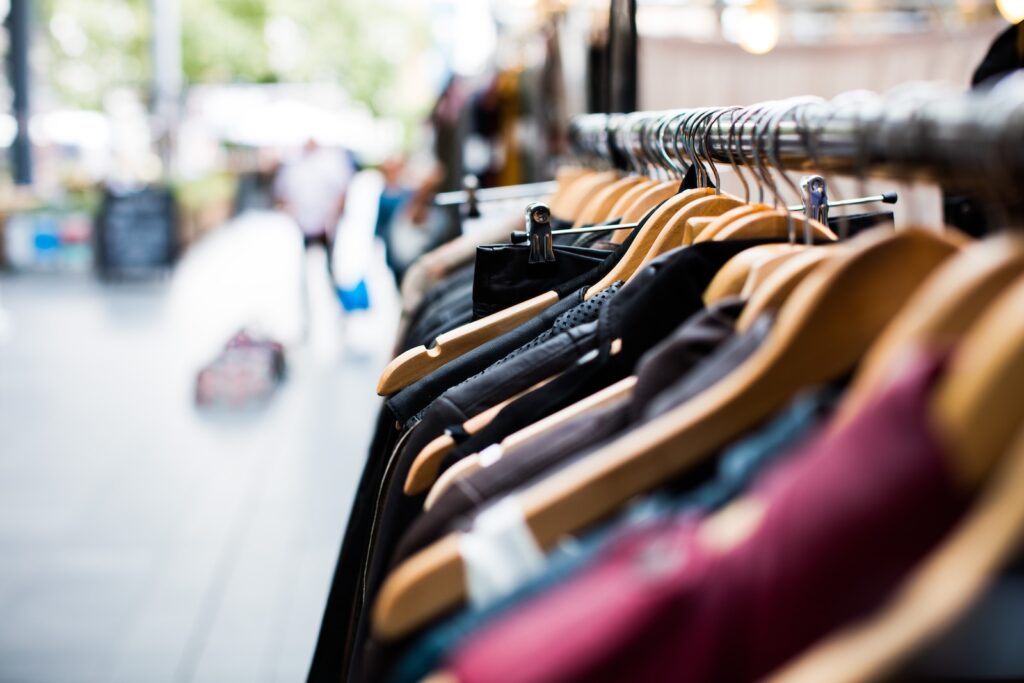What is Sustainable Fashion?
In recent years, there has been an increase in consumer awareness and demand for more sustainable fashion. Sustainable fashion emphasizes not only ecological benefits, but also social justice. It’s so much more than just using eco-friendly materials; it’s about creating a fairer and more ethical production system.
So, what is sustainable fashion and why should you care? In this article, we will explore the topics of what sustainable fashion is, the benefits, challenges and how to shop sustainably. We will also discuss the future of sustainable fashion and, finally, draw a conclusion.
The Benefits of Sustainable Fashion
The term “sustainable fashion” has become an increasingly important one in the fashion industry. It is a phrase that encompasses a wide range of topics, from the materials used to create clothing to the supply chain practices used to get that clothing to you. Sustainable fashion is all about promoting a healthier environment and creating a better future for all.
One of the biggest benefits of sustainable fashion is its environmental friendliness. Instead of using synthetic materials and generating waste, sustainable fashion is focused on using materials that are natural and renewable, such as organic cotton and bamboo.
Not only are these materials better for the environment, but they also help to create clothes that are more breathable and softer on the skin. Sustainable fashion is also committed to reducing the carbon footprint of fashion. This can be accomplished by reducing energy consumption, decreasing water usage, and reducing the use of chemicals.
Sustainable fashion is also an ethical way to shop for clothing. Sustainable fashion companies often use fair trade practices, meaning that the people making the clothing are paid a living wage and work in safe and humane conditions.
Sustainable fashion companies are also often more transparent, allowing customers to see where their clothes are sourced from and the production processes used.
Finally, sustainable fashion is a great way to shop for trendy and stylish clothing. It is no longer necessary to choose between looking great and being kind to the environment. Sustainable fashion companies are dedicated to creating high-quality pieces that are fashionable and stylish.
In summary, sustainable fashion is an incredibly important movement in the fashion industry. It provides environmental protection and ethical practices in the production of clothing. It also gives customers the opportunity to purchase stylish and trendy clothing without sacrificing quality or ethics.
Sustainable fashion is the future of eco-friendly clothing, and it has the potential to make a huge impact on the fashion industry.
The Challenges of Sustainable Fashion
One of the toughest challenges of Sustainable Fashion is the cost. Sustainable fashion typically relies on more natural materials and processes, which can be significantly more expensive than traditional fashion materials.
Similarly, sustainable fashion products also take much longer to produce, as they require more complex and labor intensive manufacturing processes. This can lead to higher price tags, which can be difficult for consumers to purchase.
Another of the challenges of Sustainable Fashion is the conflicting desires of consumers. Many consumers want to purchase clothing that is eco-friendly and sustainable, but they also want fashion that is trendy and fashionable. It can be difficult for companies to balance both of these desires and to create pieces that are both fashionable and sustainable.
Finally, a lack of knowledge and awareness is a major challenge for Sustainable Fashion. Consumers often don’t understand the meaning and implications of eco-friendly and sustainable fashion, which can make it difficult for companies to promote and spread the message.
Similarly, many fashion designers are still unfamiliar with the materials and techniques used in sustainable fashion, meaning that there is not yet a large body of experts who are able to design sustainable fashion pieces.
These challenges demonstrate the difficulty of Sustainable Fashion, particularly from a consumer perspective. Companies need to work to increase awareness, reduce costs, and create trendy designs that will appeal to consumers who are looking for eco-friendly ways to dress. If successful, Sustainable Fashion can become a mainstream and widely accepted form of fashion.
How to Shop Sustainably

As the fashion industry looks towards the future, they are increasingly turning to sustainable practices and eco-friendly clothing. Shopping sustainably means reducing your ecological footprint by buying clothes that are made with sustainable materials and/or produced in an ethical way. Here are some tips on how to do just that.
- Do Your Research
It’s important to take the time to do your research on a company before you make a purchase. Read company websites, find out about their production processes and materials used in their clothes, and even contact them directly with questions. Read up on their sustainability credentials and make sure you are happy with what you’re buying.
- Look for Sustainable Materials
Sustainable materials are those that are either renewable or biodegradable, and don’t damage the environment. Popular sustainable fabrics include bamboo, hemp, linen, and organic cotton. Look for clothes that are made from sustainable materials and be sure to check the label.
- Shop Local
Shopping local is an excellent way to ensure the clothes you buy are produced in an ethical way, as it is easier to monitor how the clothes are made and who is making them. Shopping at local independent stores can also help to support your local community.
- Choose Quality Over Quantity
Rather than buying a lot of cheap, fast fashion clothes, opt for quality over quantity and invest in clothes that will last longer. Buying higher quality clothing means you can wear it for longer, so you’re not buying new clothes as often.
- Choose Secondhand
Shopping secondhand is a great way to reduce the impact of your wardrobe on the environment. As well as being a more affordable and sustainable option, secondhand clothes can be fun to shop for and have their own story.
By following these tips, you can make sure you’re shopping sustainably and responsibly for fashion and clothing. Sustainability is an important partof the future of the fashion industry and it’s up to us to make sure we are taking the steps to ensure it is a responsible one.
Look For Sustainable Materials
When shopping for eco-friendly clothing, it’s important to consider the materials that make up the item. It’s better to choose items from companies that use materials that are either sustainably sourced or eco-friendly.
Sustainable materials include materials made from renewable sources, such as bamboo or organic cotton. These materials are produced in ways that reduce waste and conserve natural resources.
Additionally, many of these materials are produced in an ethical manner, providing better working conditions and wages for workers.
Synthetic materials are often used in fashion, but many of these materials are not sustainable. Therefore, it is better to select items made from natural fibers, like wool, hemp, and silk, as these materials are more environmentally friendly and biodegradable.
Additionally, choosing organic materials like cotton and bamboo is a great way to support sustainable fashion.
When shopping for eco-friendly clothing, it is important to look at the labels. Clothes that are labeled as “eco-friendly” or “all natural” may be made with sustainable materials and are therefore better for the environment.
However, it is important to read labels carefully to ensure that the materials used meet the standards of sustainability. Additionally, looking for certifications such as Fair Trade or Oeko-Tex can also be a good indication of an item’s sustainability.
Finally, attempting to purchase items made close to home can help to reduce energy costs associated with manufacturing and transportation. By taking the time to look for sustainable materials in clothing, individuals can be part of the shift towards more sustainable fashion.
Buy from Sustainable Brands
The best way to ensure that your fashion choices are eco-friendly is to buy from sustainable brands. Sustainable fashion brands are those that use eco-friendly materials and production techniques, focus on ethical labor practices, and promote sustainability as a core part of their mission.
Shopping from these brands allows you to support eco-friendly brands while also reducing your environmental impact.
When shopping for sustainable fashion clothing, look for labels with organic cotton, bamboo, hemp, or other natural materials. These natural fabrics are easier on the environment than synthetic materials like polyester and nylon.
Many sustainable brands also use eco-friendly dyes and other production techniques that have a low environmental impact.
Sustainable fashion brands also focus on ethical labor practices. Many sustainable fashion brands prioritize fair wages, safe working conditions, and the use of locally sourced materials and labor. This ensures that workers in the fashion industry are paid fairly for their work and have safe working conditions.
Finally, many sustainable fashion brands focus on giving back to their communities and supporting projects that help to protect the environment. For example, many sustainable fashion brands donate a portion of their profits to environmental charities. This allows consumers to feel good about their purchases, knowing that they are supporting an eco-friendly brand that is also helping to make the world a better place.
Overall, shopping from sustainable fashion brands is the best way to ensure that your fashion choices are eco-friendly. By buying from these brands, you can feel good about your purchase and know that you are helping to protect the environment.
Look for Disclosure Information
When shopping for eco-friendly clothing, look for disclosure information from the company and preferably an independent third-party certifier to ensure the clothing’s validity as a sustainable product.
Every company has a different set of sustainable standards they must meet, such as water and energy conservation, material sourcing, chemical and waste management, and corporate social responsibility.
Many companies include these standards on their website, and some even have them printed on their clothing and packaging for customer reference.
Having a third-party certifier adds additional assurance of the sustainability of the fashion brand’s products. Organizations such as the Global Organic Textile Standard, Fairtrade Certified, and Cotton LEADS certification programs all certify various eco-friendly clothing and fashion items and can provide customers with a guarantee of the product’s sustainability.
The certification process varies by organization, but generally requires that companies undergo a comprehensive assessment of their product’s materials and production processes in order to qualify for the certification. This assessment process is also necessary for a company to be able to legally advertise their products as eco-friendly and sustainable.
To further support sustainable fashion, it is important to remember to research and read labels when shopping for eco-friendly clothing. This will help to ensure that the clothing you buy is of the highest quality and is produced ethically and in an environmentally responsible way. Learning to recognize quality and sustainability practices when shopping can help to create a brighter future for the fashion industry.
Be Mindful of Trends
As fashion trends come and go, it is important to be mindful of what is considered “in-vogue” at any given time. This is particularly true when it comes to sustainable fashion. While it is important to remain up to date on the latest fashion trends, there are ways to do so while still remaining conscious of the environment.
To start, it is wise to look for eco-friendly fashion trends made from natural materials. Natural materials, such as organic cotton, do not require the use of harsh chemicals or toxins and is a much more sustainable option.
Additionally, when shopping for fashion trends, it can be helpful to look for pieces that are locally made. This reduces the emissions generated from shipping, as well as supports the local economy.
Furthermore, investing in quality pieces that can be worn for years to come is a great way to stay on trend without having to replace items as often.
Finally, as a way to further embrace sustainable fashion, one can look towards second-hand pieces. Buying pre-owned clothing that is still in good condition is a great way to add variety to one’s wardrobe in a sustainable way. Not only does this reduce the need for new clothes, but it also leaves a much smaller environmental footprint.
In sum, fashion trends are constantly changing and it is important to remain up-to-date on the latest styles. While doing so, it is important to remain mindful of the environment by opting for sustainable fashion trends, such as organic cotton and locally made pieces. Furthermore, second-hand items can be a great way to add variety and to help minimize one’s environmental impact.
The Future of Sustainable Fashion

When it comes to fashion and clothing, sustainability is the way of the future. In the era of global warming and increasing awareness of environmentally conscious practices, eco-friendly clothing is the best way to reduce our ecological footprint.
As the global population continues to grow, sustainability is becoming an increasingly important issue, and sustainable fashion is an important part of this.
The fashion industry is among the world’s largest polluters, so finding ways of creating sustainable clothing is one of the most effective methods of reducing environmental impact. Sustainable fashion can take many forms, and there are a few key ways of making clothing more sustainable.
One way to make clothing more sustainable is to use eco-friendly materials. Natural materials, like organic cotton and bamboo, are renewable sources and can be grown without damaging the environment.
There are also many recycled materials that can be used in clothing, such as recycled plastic bottles, which are a great way to reduce waste and emissions.
Another way to make clothing more sustainable is to make sure that the clothing is made in a responsible way. It is important to make sure that the clothing is produced in a way that is safe for workers and is not damaging to the environment.
Many fashion companies are now taking steps to ensure that their production processes are sustainable, from using ethical labor practices to using renewable energy sources.
Finally, sustainable fashion also focuses on the quality of clothing. Companies are now using methods like slow fashion and upcycling, which help to reduce waste and extend the life span of clothing.
By creating durable and well-made clothing that can be worn for years, fashion companies can help reduce the impact of the fashion industry on the environment.
Sustainable fashion is the way of the future, and there are many ways to make sure that our clothing is eco-friendly and responsibly made. By focusing on eco-friendly materials, production processes, and high-quality clothing, the fashion industry can make apositive impact on the environment and help create a more sustainable future.
Conclusion
The sustainable fashion revolution has made incredible progress in recent years due to increasing consumer awareness and demand. It is a movement that recognizes the importance of creating clothing while minimizing the negative impacts on the environment.
Although the challenges are great, the potential benefits of sustainable fashion are even greater. With a greater focus on materials that are sourced sustainably and clothing that is made to last, sustainable fashion can play an important role in reducing our impact on the environment and promoting a more equitable and sustainable lifestyle.
As individuals, we can be more conscious of the materials we use and the clothes we buy, and we can also actively seek out sustainable fashion brands that promote a healthy, sustainable fashion industry. By committing to sustainable fashion, we can help ensure a brighter and more sustainable future for fashion and the planet.

